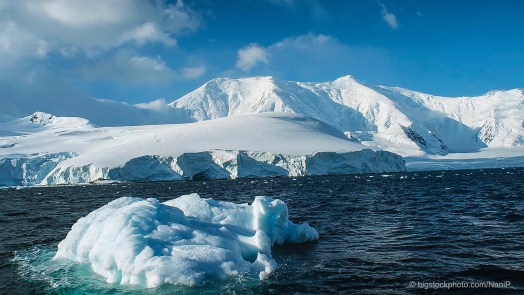
“God goofed when He made so much water and so little land!” I recently heard a real estate salesman say that in a sales pitch to sell expensive lots. If you have taken a long intercontinental trip by plane or ship, you might tend to agree. Water covers roughly 75% of the surface of our planet. With our huge growth in human population, land suitable for human occupation is becoming scarce. Is there too much water on Earth? The answer to that question is a resounding “NO!!!” Every living cell depends on water, but the properties of water combined with its distribution and abundance cause its importance to go far beyond that fact.
Water is highly reflective. Ocean water reflects much of the light energy from the Sun back into space, so Earth’s surface does not become overheated. This is especially important because most of our surface water is in the Southern Hemisphere. When Earth’s orbit brings it closest to the Sun, the Southern Hemisphere faces the Sun. There is a massive potential for solar energy to overheat the land. Since most of Earth’s land area is in the Northern Hemisphere and most of the surface water is in the Southern Hemisphere, overheating doesn’t happen. This designed distribution of the land masses combined with the reflectivity of water protects us from overheating. We do not have too much water on Earth.
Water is a unique substance in terms of thermodynamic values. It is the standard frame of reference for specific heat and has a value of 1 calorie/gram. Water’s freezing and boiling points are zero and 100 degrees Celsius, which is a minimal difference in temperature compared to other substances. Water also has a high specific heat which means it can store the energy it absorbs better than other materials. Water’s heat of vaporization is 539.6 calories per gram, which is huge. The heat of vaporization is the amount of energy required to change water from the liquid state to the vapor state without changing its temperature. The capacity of water to store heat radically controls the climate. Water absorbs energy from the Sun and carries it in various ocean currents around the world. We don’t have too much water on Earth because it moderates the climates along all coasts of our planet. Planets and moons with no surface water experience violent storms and enormous variations in temperature.
Because water is a polar molecule, it can dissolve virtually all salts and many chemicals essential for life. The polar nature of the water molecule also allows it to be a condensation nucleus for the production of rain. As the oceans warm in tropical areas, the rate of water evaporation increases. As the water vapor cools, it needs something on which to condense. We all know that when the humidity is high, water condenses on our windows, our grass, and virtually any other exposed surface. To make rain, the water condenses on particles in the atmosphere. On land, the particles would be dust. Over the oceans, the particles are salt which is also a polar molecule and provides the ideal structure to make rain.
These simplified explanations should help us see that there is not too much water on Earth. We need all of that water to make life on Earth possible. Our climates, our movement of heat, the production of rain and snow, and the very formation of life itself all depend on water.
Genesis 1:2 tells us that God established water as one of the building blocks that allowed the Earth to support life. Verses 9-10 tell us that the “waters were gathered together into one place” and that those waters “were called seas, and God saw that it was good.” Proverbs 8:24 finds wisdom speaking of God’s creation. Wisdom tells us that water was created before there were mountains, hills, or dust. It has taken science thousands of years to understand why there is so much water. Today we now know that it is not only good, but it is vital to our existence.
–John N. Clayton © 2019










